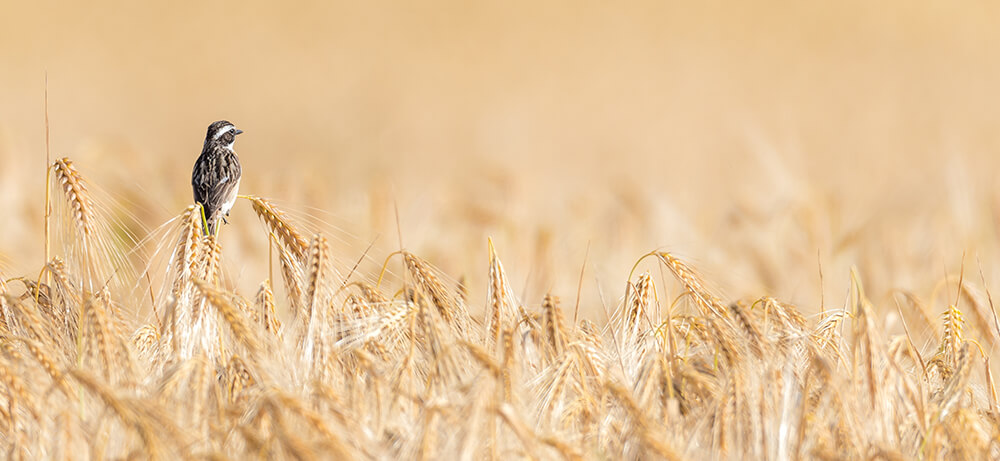Birds and Planes Collide Over Cornfields
It’s a bird. It’s a plane. It’s a bird hitting a plane. Bird strike is the official terminology for when birds come in contact with an airplane. Dozens of collisions between birds and airplanes occur every day. These bird bumps are fatal for the animals but a small percentage of them are also damaging to the machines. Large birds and smaller birds that fly in flocks pose the biggest threat to airplanes.
Bird strike risks
Planes are at the greatest risk for bird strikes during takeoff and landing because they’re flying at the same altitude as birds. The severity of a bird strike depends on speed, impact site, the size of the bird, the size of the plane. Birds getting caught in jet engines are often the worst case scenario for bird strikes. This can mess up the fan blades and cause the engine to fail. It doesn’t take an expert to realize that engine failures are bad news.

Birds of a feather
When it comes to bird strikes, geese are a particular concern for pilots because they flock together. The famous landing of US Airways Flight 1549 on the Hudson River in New York City was caused by a goose. Larks, starlings, and meadowlarks are just a few other examples of birds that travel in flocks. More birds in flight mean there’s a greater chance of one or multiple animals colliding with the aircraft. Scientists are looking into what exactly attracts a flock of birds to a plot of land. The idea is that they could make the ground around airports less desirable for flocks of geese and other species to rest. This includes eliminating standing water from ponds, lakes and drainage pools when possible.
Habitats and airplane hangers
Airports are usually built on the outskirts of urban areas. This means they’re closer to farms, agricultural areas, and bird habitats. The birds have an added benefit of staying close to the airport because all the commotion drives away predators. Airport officials and wildlife conservationists see more risks than benefits to having a large bird population near heavy air traffic. Solutions for bird strikes fall into three main categories. You can adjust the aircrafts’ movements, change the birds’ behavior or modify the birds’ habitat.
Farmers help reduce bird/plane collisions
Farmers play an important role in habitat modification near airports. If your land is near an airport, there are ways you can help reduce the risk of bird strikes. The idea behind habitat modification is to make the area surrounding airports an unappealing landing spot for birds. This includes regularly mowing the grass and uprooting plants like trees and brush. These two easy fixes eliminate potential nesting sites. Some bird species feed on insects, so using insecticides and pesticides reduces the food supply near airports. Without food, the birds will move on to a new area. A seed-bearing plant is exactly what it sounds like; it’s a plant that produces seeds. Birds feed on these seeds, (Think about the bird seed you see in the garden section at the store.) so removing them is another way to naturally drive away feathered foes.

The number of bird strikes in an area might also depend on what kind of crops farmers plant in the fields near airports. Scientists studied differences in bird preferences by observing which crops they land in most often. While there is no clear, safer option, soybeans appear to reduce the number of bird strikes. Soybean fields attracted fewer flocks of birds than wheat fields and corn fields. The problem with this solution is that crop rotation is important to maintain soil quality, reduce weeds and increase yields.
There’s no easy way to stop birds from hitting planes. Teams of people are coordinating efforts to minimize the risk of bird strikes near airports. Scientists, wildlife experts, airport officials and agriculture specialists are all working together to keep birds, planes, and people safer.
